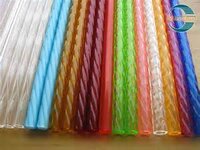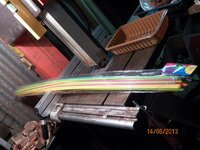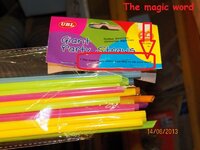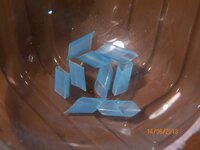George, I received my blanks today. They look great and I can't wait to give them a turn. I do have one question. I would like to fill some of the small voids with either a resin or powdered stone, but I'm not sure the best way to prepare the blank to remove the wax from inside the void, any suggestions? Thanks Dan
The wax shouldn't be too deep, in fact, you don't have to do anything until you have then on the mandrel or TBC and get the wood right to the hand sanding stages. By them, 90% of some cracks or crevasses are gone.
If, there is anything that has to be filled, chances are, the wax never went that far, as I don't fully submerse the wood into the wax but simple touch each face of the blank on the hot wax, that normally allow the wood to show all its colours and grains, without contaminate the whole blank with wax.
There are 2 simple way to remove wax from wood, one is to boil water and as soon as the water reaches boiling, drop the blank into into for a couple of minutes, the hot water removes the wax and brings it to the water's surface so, I spoon or a paper towel should the use to "scoop" the wax out, otherwise, when you try to remove the wood from the boiling water, the wax gets stuck to the wood, again...!capich...???
If you think that the wood stayed in the boiling water for a little longer than it should have, to make sure the wood doesn't warp, you have to clamp it between 2 straight pieces of wood and put some weight on top of it, that will make sure the wood will stay straight while the wood cools down, that can take as little as 30 minutes, depending of your temps...!
The other method would be more applicable for when the blank is already half processed so, any smaller crevasses that you want to fill but are not sure if they have any wax or not, use a heat gun, a hair dryer or anything that can produce heat in a direction way and take it close to the crevasse/hole, for about 15 seconds on its hight heating set, you don't need to burn the wood, the wax will melt off the crevasse in no time.
If there is any doubt in your mind of any residue of wax still inside the crevasse/crack, simply put a drop of thin CA into it, unless the whole is too small, then I would put the thin CA on it and it can fill the whole and then you have no room to put the coloured filling.
For small fillings, I like to use medium to thick CA and some of the Pearlex powders used for casting, you can get any colours you like and here in Australia you can get the small sample Pearlex powders in 3gr containers, they are plentiful for fillings like this.
The use of stone crashed materials such as Turquoise, are also great and a better option for bigger fillings using epoxy however, even with different grades of crashing sometimes, it still a little too big size"particles" to be effective or useful, in very small holes/cracks...!
Too small whole or cracks are sometimes better filled with a matching material, and for that, you only have to get some saw dust from that blank or even small shavings and them mesh them out into dust and then use it.
One of the cheapest way to make shaving into small particles (almost dust) is by using one of those inexpensive coffee grinders, I have one that cost me $24 on eBay, but there are other methods to transform wood shavings into powder.
And this is when, my "old suggestion" tom every time you are going to work with a new wood, start with a clean lathe and lathe working area, get some plastic or glass containers and collect some dust or savings from that wood, put it in a bottle and write on it what it is. Do that to all woods you normally work with, what this do is, you are going to have a good collection of wood sawdust samples of all wood colours around, that is all you need to, and at any time to find one that is a matching wood or the closest colour to the one you need to do a matching fill.
This is useful for any kind of turnings you will ever do, from pens to bowls and anything in between...!
If I got you confused, let me know, any questions welcome, as always...!
Cheers
George






